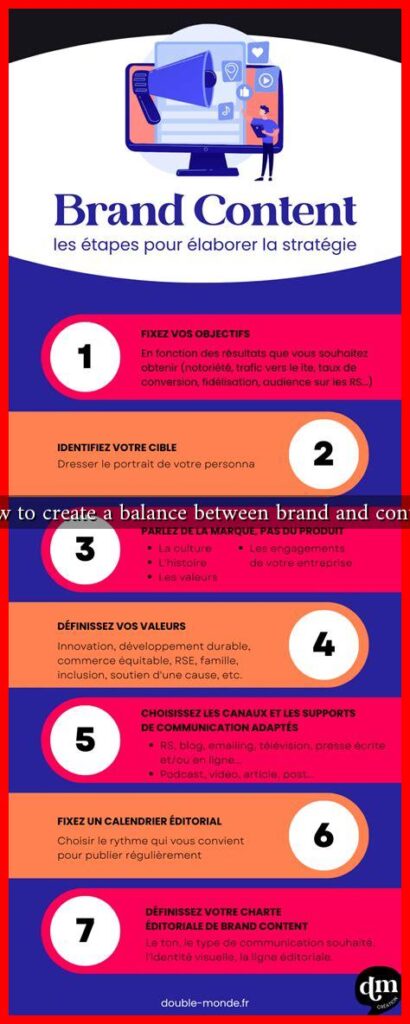-
Table of Contents
How to Create a Balance Between Brand and Content
In today’s digital landscape, the relationship between brand and content is more crucial than ever. Brands must not only communicate their identity but also engage their audience through compelling content. Striking the right balance between these two elements can lead to increased brand loyalty, higher engagement rates, and ultimately, better sales. This article explores effective strategies for achieving this balance.
Understanding the Importance of Brand and Content
Before diving into strategies, it’s essential to understand why both brand and content are vital. A brand represents the identity, values, and promise of a company, while content serves as the medium through which these elements are communicated. According to a study by HubSpot, companies that prioritize content marketing see conversion rates six times higher than those that do not.
Strategies for Balancing Brand and Content
To create a harmonious relationship between brand and content, consider the following strategies:
- Define Your Brand Voice: Establish a clear brand voice that reflects your company’s values and resonates with your target audience. This voice should be consistent across all content types, whether it’s blog posts, social media updates, or email newsletters.
- Align Content with Brand Values: Ensure that your content aligns with your brand’s core values. For instance, if your brand promotes sustainability, create content that highlights eco-friendly practices or products.
- Utilize Storytelling: Storytelling is a powerful tool for connecting with your audience. Share stories that embody your brand’s mission and values, making your content more relatable and engaging.
- Engage with Your Audience: Encourage audience interaction through comments, polls, and social media engagement. This not only builds community but also provides insights into what resonates with your audience.
- Measure and Adjust: Use analytics tools to track the performance of your content. Metrics such as engagement rates, shares, and conversions can help you understand what works and what doesn’t, allowing you to adjust your strategy accordingly.
Case Studies: Brands That Excel at Balancing Brand and Content
Several brands have successfully balanced their brand identity with engaging content. Here are a few notable examples:
- Red Bull: Known for its extreme sports branding, Red Bull creates content that aligns perfectly with its adventurous image. Their media house produces high-quality videos and articles that not only promote the brand but also engage their audience in thrilling experiences.
- Patagonia: This outdoor clothing brand is renowned for its commitment to environmental sustainability. Patagonia’s content often focuses on environmental issues, showcasing their dedication to their values while also promoting their products.
- Coca-Cola: Coca-Cola’s “Share a Coke” campaign is a prime example of blending brand and content. By personalizing their product with names, they created a content-driven campaign that encouraged social sharing and engagement, reinforcing their brand message of happiness and connection.
Statistics That Highlight the Need for Balance
Understanding the impact of balanced brand and content strategies can be illustrated through various statistics:
- According to Content Marketing Institute, 70% of consumers prefer getting to know a company via articles rather than ads.
- Brands that prioritize content marketing see 6 times higher conversion rates than those that do not.
- Content marketing costs 62% less than traditional marketing and generates about 3 times as many leads.
Conclusion
Creating a balance between brand and content is not just a marketing strategy; it’s a necessity in today’s competitive landscape. By defining your brand voice, aligning content with brand values, utilizing storytelling, engaging with your audience, and measuring performance, you can create a cohesive strategy that resonates with your audience. The examples of successful brands illustrate that when done right, the synergy between brand and content can lead to remarkable results. Remember, the goal is not just to sell a product but to build a lasting relationship with your audience through meaningful content.


